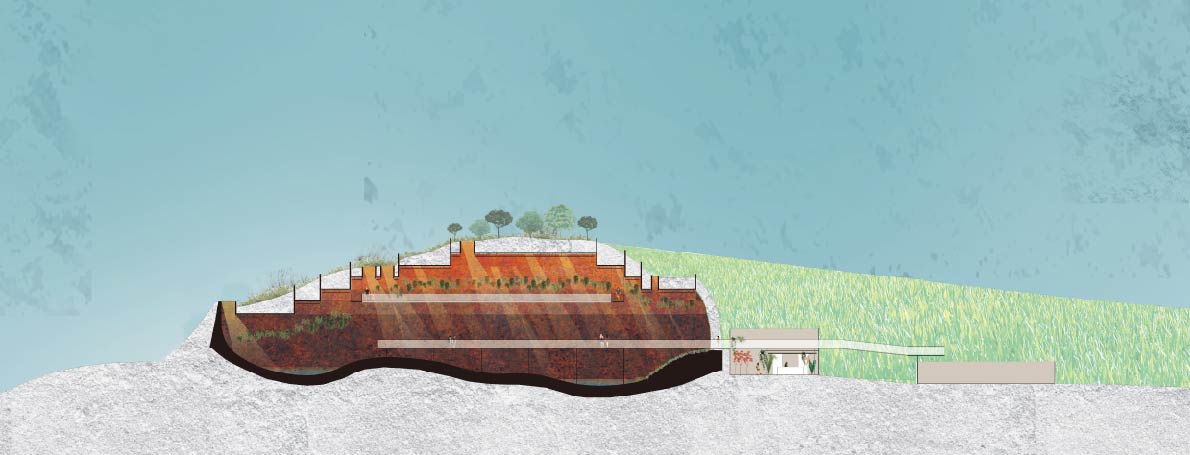



Ethereal Boundary
台灣 / taiwan
劉康之 / Kang-Jhih Liu
從小搭捷運進市區時,一段路程窗外的風景都是山坡、隧
道、墓園。
進到山裡調查墓的坐向、高度、類型以及背後的族群,墓
園分佈範圍從信義區延伸至木柵,從日治時期一路至今。
而今政府頒布遷葬,老舊痕跡註定被剷除?
基地為都市邊陲的山坡墓園,
將墓園的痕跡留下用鋼板搭出一個薄殼,底下的空間有五基地位於六張犁捷運站附近,
個入口,從邊陲的廢墟房子引入。
空間內部懸吊蕨類,與3000多個對應的墓開洞,試著創
造一個都市記憶與常民生活的交織。
On the road taking the MRT to the city center, there is a sight
filled with hills, tunnels, and graveyards. I entered the hill to
investigate the orientations, heights, and types of the graves
and try to understand the background of the ethnic groups
(of the graves). The graveyard locates from Xinyi District to
Mucha and it was built in the Japanese Occupation Period
(1895-1945). Now the government announces to move
graves. Is it necessary to eradicate the old-time memory?
The site is near the MRT Liuzhangli Station. The graveyards
on the hill are the urban border. I plan to keep the exterior
using steel plates to construct thin shells. There are five
entrances all placed in the ruins, which are on the edge of the
hill. There are ferns hung in the interior. With the sunlight
streaming from the 3000 holes where the original graves
locate, I try to interweave the city memory and citizens’ daily
life in the space.
More Projects of this Session
展區其他作品